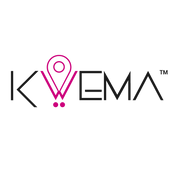On the other hand, an inconsistent fire evacuation plan in any workplace can lead to fines. For instance, OSHA proposed $265,265 in penalties to a retail discount store in Florida after following an inspection from October last year. Investigations determined that the company exposed workers to fire, entrapment and struck-by hazards, blocked exit routes, and improperly stacked boxes and other materials that might fall and injure workers.

In a previous blog, we talked about the minimum requirements for developing a workplace evacuation plan for emergencies. But when it comes to fire evacuations, there are some crucial points you must consider when developing a plan for fire management. Here are what we found based on OSHA standards:
Employees should know what to do during fire evacuations
Employees’ preparation for fire events is key to keep them protected. OSHA points out that employers should train workers about fire hazards in the workplace, they should know what to do in a fire emergency, and they should know the fire evacuation procedures as well. Moreover, if workers are expected to use fire fighting equipment, employers must provide it and train them for their correct use.

Consider the type of your workplace
When developing an emergency plan for fire management at work, there must be enough exit routes for safety and quick evacuation. Therefore, employers should consider different actions for a safe evacuation, including the type of industry, height and type of construction of the building or structure, and the number of people exposed. In addition, exit doors must not be blocked or locked unless an approved alarm system is integrated.

Make sure the workplace emergency action plan is consistent with safety standards
Remember that when required, employers must develop an emergency action considering minimum standards. For example: the description of routes and procedures that employees must follow, procedures for evacuating disabled employees, accounting for all employees after evacuating, determining procedures for employees who operate critical tasks before evacuation, and determining preferred means for reporting emergencies.
How Kwema can help during fire evacuations at the workplace
Either during real fire evacuations or drills, any workplace must be prepared to respond effectively to an emergency of this nature. Kwema Smart Badge includes the Kwema Evacuate™ functionality, which helps the emergency management department automate roll call and identify where employees are during mass evacuations/fire drills optimizing evacuation staff’s focus on the employees that are yet to evacuate. Not only is this useful for effectively managing risks and preventing injuries, but also it saves precious time as well as avoids training costs as they can be placed in something employees already wear.
fire management fire safety fire escape plan fire evacuations fire management fire evacuations fire safety escape fire plan
